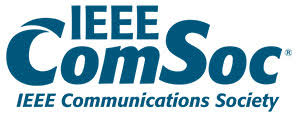The proliferation of new services in the Internet of Things (IoT) market is driving the Quality of Service (QoS) requirements ever higher in terms of performance indicators spanning throughput, delays, network coverage etc. Meanwhile, a multitude of battery-hungry constrained devices are either connected to the Internet or are about to be. This connection of physical objects to the Internet has infused immense doses of intelligence in our environment. This comes through ICT-enabled (mainly constrained) devices that are either directly attached to our objects, or monitoring and controlling them, shaping the IoT.
The IoT enables the interconnection of heterogeneous devices (laptops, smartphones, tablets, sensors, actuators etc.) allowing them to communicate seamlessly to the user, exchanging information and data without human intervention. This type of communication is expected to be the key enabling part of the future communication landscape, since a large number of smart applications are based on large volumes of machine-generated data. By 2020 it is expected to have even billions of wireless devices connected to the global internet. This explosion in the number of wireless devices raises unprecedented requirements for the upcoming communication technologies (e.g. 5G, 802.11ah, etc.) that are being developed to support the interconnectivity of heterogeneous devices, the large amounts of devices and the new types of services that will be provided.
The target of this SiG is to bring together researchers focusing on modeling and optimization of networking technologies to support the diverse QoS requirements of the IoT applications aiming to identify solutions for addressing the key challenges that IoT brings to the networking domain. The groups interests span:
- Architectures and protocols optimization for IoT
- Cellular IoT
- Performance modelling of future IoT networks
- Co-existence issues of future heterogeneous networks for the IoT
- Resource management mechanisms for future heterogeneous networks
- Optimized and robust dynamic spectrum access on IoT
- Modeling of IoT traffic
- Scalability in IoT
- Energy efficiency in IoT networks
- Quality of Service in future heterogeneous wireless IoT networks
- Case studies, prototypes, and test-beds on IoT
- IoT and 5G
The expected core activities of the SiG will be devoted to:
- foster interaction among experts in optimization of networking technologies for the IoT
- provide an open forum for information exchange among them, and
- facilitate new collaboration activities between them
Leaders: Elias Tragos and Vangelis Angelakis

